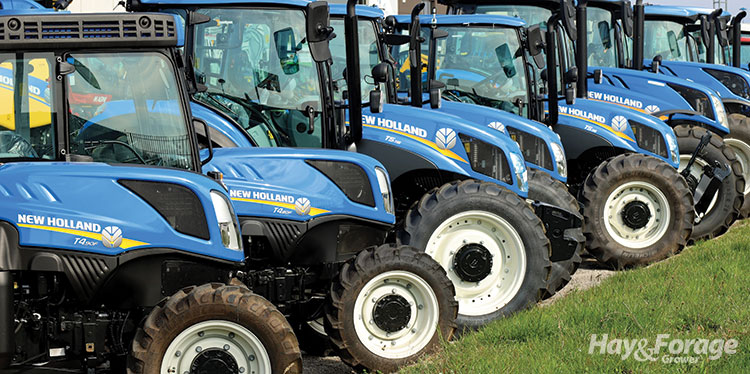The author is a managing partner in Elite Ag LLC, Leesburg, Ga. He also is active in the family farm in Rutledge.

As harvest starts to wrap up, it’s time to get equipment cleaned and put away for winter. It’s also a time to make those dreaded phone calls to your certified public accountant (CPA) to gauge how the tax situation is shaping up for this year. Like most years, bottom lines will be all over the place depending on geographic location.
For many grain producers, 2021 will wind up being a year of selling some much-needed higher dollar crop. Milk price has been its typical roller coaster but seems to have trended up this year more than in the recent past.
One thing that remains different in 2021 and will continue into 2022 is equipment availability. In past years, after the year-end meeting with the accountant, we could call up our local dealership, cooperative, or seed dealer and purchase some items to put on the year-end books. Equipment was one of those items that technically needed to be sitting at your farm by December 31st to claim it as a current-year expense; however, this will be difficult to make happen in 2021.
Can’t keep up
Equipment manufacturers are trying to make a dent in the orders placed by dealers this year but seem to be falling farther behind with each passing day. There are some storage lots for new tractors and combines where hundreds of units sit waiting on a few components to complete the build. Once these components are available, they still won’t magically pop up at a local dealership. There simply aren’t enough trucks to go around with qualified drivers to get them delivered.
A lot of farmers who normally trade in equipment each year are likely going to find themselves running their current units for a couple more years. If you have a normal equipment rotation plan, it’s probably been blown out of the water by now. Those who typically like to purchase their units could find themselves toward the back end of a long list of customers, unless there was some proactive preplanning. If there is equipment you would like to upgrade to a new unit, then you will probably be asked to sign a purchase order far in advance.
A challenge for all
The bad news is that your salesperson will probably not be able to give you an exact build date. Well . . . he or she can give you a date, but there is a 100% chance that the first estimate offered will only be one in a long line of future predictions.
I know that this makes it challenging to plan for planting and/or harvest, but this is a problem for manufacturers of all brands and colors. It will be a slow process for each manufacturer to get caught up. Each one will have a different issue sourcing different components. I do not see this issue being resolved in 2022; rather, it may be into the first quarter of 2023 before the industry can see light at the end of a long manufacturing tunnel.
The best advice I can offer — and it’s not earthshaking — is to exhibit patience and foresight. Plan ahead and get the equipment you need ordered with your dealer, as some manufacturers will move these orders up in the line. There will inevitably be some farmers who don’t get their equipment on time as originally promised, but know that dealerships and manufacturers are doing all that they can to meet their customers’ needs.
As with the weather, there are just some things we can’t control. This will hopefully be a once in a lifetime problem. Be safe out there.
This article appeared in the November 2021 issue of Hay & Forage Grower on page 24.
Not a subscriber? Click to get the print magazine.

